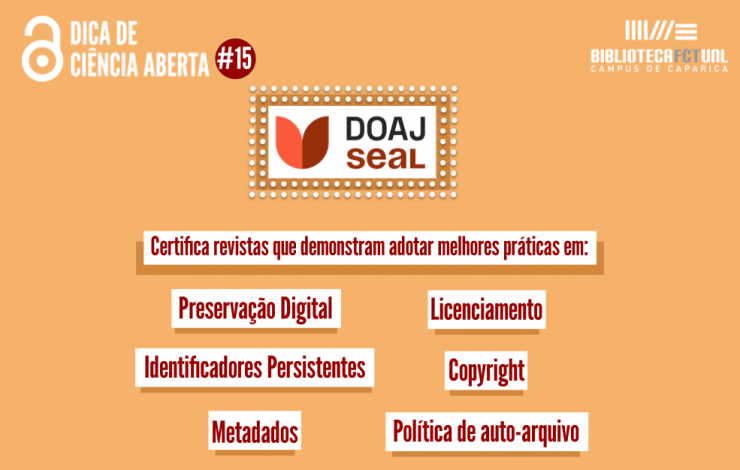14-03-2023

O
DOAJ, já apresentado na
dica 9, é o maior diretório de revistas científicas em acesso aberto do mundo, cujos critérios de admissão são considerados padrão para a publicação em acesso aberto.
Agora, o DOAJ passou a certificar revistas que adotem um conjunto de boas práticas na preservação a longo prazo, atribuição de identificadores persistentes, descoberta de recursos, políticas de reutilização e direitos de autor.
O
DOAJ Seal é concedido a revistas que demonstram aplicar os seguintes sete critérios:
| 1. Digital preservation |
The journal content must be continuously deposited in one of these archives:
|
- any archiving agency included in Keepers Registry
- Internet Archive
- PubMed Central
|
| 2. Persistent article identifiers |
- Articles must use persistent article identifiers: DOI, ARK or Handle are the most commonly used.
- All persistent links must resolve correctly.
|
| 3. Metadata supply to DOAJ |
Article metadata must be uploaded to DOAJ regularly.
|
| 4. License type |
The journal must permit the use of a Creative Commons license that allows the creation of derivative products:
|
- CC BY
- CC BY-SA
- CC BY-NC
- CC BY-NC-SA
|
| 5. License information in articles |
Creative Commons licensing information must be displayed in all full-text article formats.
|
| 6. Copyright and publishing rights |
Authors must retain unrestricted copyright and all publishing rights when publishing under any license permitted by the journal.
|
| 7. Self-archiving policy |
- Authors must be permitted to deposit all versions of their paper in an institutional or subject repository;
- An embargo may not be applied.
|
All versions of the paper:
- Preprint
- Author's Accepted Manuscript
- Published article (Version of Record)
|

